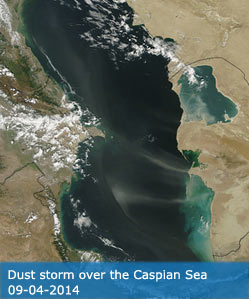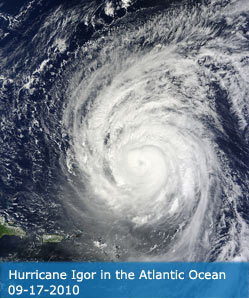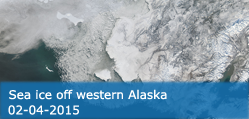Science Team
Publications
Robbins, DJV; Poulsen, CA; Siems, ST; Proud, SR; Prata, AT; Grainger, RG; Povey, AC (2024). Geostationary aerosol retrievals of extreme biomass burning plumes during the 2019-2020 Australian bushfires. ATMOSPHERIC MEASUREMENT TECHNIQUES, 17(10), 3279-3302.
Abstract
Extreme biomass burning (BB) events, such as those seen during the 2019-2020 Australian bushfire season, are becoming more frequent and intense with climate change. Ground-based observations of these events can provide useful information on the macro- and micro-physical properties of the plumes, but these observations are sparse, especially in regions which are at risk of intense bushfire events. Satellite observations of extreme BB events provide a unique perspective, with the newest generation of geostationary imagers, such as the Advanced Himawari Imager (AHI), observing entire continents at moderate spatial and high temporal resolution. However, current passive satellite retrieval methods struggle to capture the high values of aerosol optical thickness (AOT) seen during these BB events. Accurate retrievals are necessary for global and regional studies of shortwave radiation, air quality modelling and numerical weather prediction. To address these issues, the Optimal Retrieval of Aerosol and Cloud (ORAC) algorithm has used AHI data to measure extreme BB plumes from the 2019-2020 Australian bushfire season. The sensitivity of the retrieval to the assumed optical properties of BB plumes is explored by comparing retrieved AOT with AErosol RObotic NETwork (AERONET) level-1.5 data over the AERONET site at Tumbarumba, New South Wales, between 1 December 2019 at 00:00 UTC and 3 January 2020 at 00:00 UTC. The study shows that for AOT values > 2, the sensitivity to the assumed optical properties is substantial. The ORAC retrievals and AERONET data are compared against the Japan Aerospace Exploration Agency (JAXA) Aerosol Retrieval Product (ARP), Moderate Resolution Imaging Spectroradiometer (MODIS) Deep Blue over land, MODIS MAIAC, Sentinel-3 SYN and VIIRS Deep Blue products. The comparison shows the ORAC retrieval significantly improves coverage of optically thick plumes relative to the JAXA ARP, with approximately twice as many pixels retrieved and peak retrieved AOT values 1.4 times higher than the JAXA ARP. The ORAC retrievals have accuracy scores of 0.742-0.744 compared to the values of 0.718-0.833 for the polar-orbiting satellite products, despite successfully retrieving approximately 28 times as many pixels over the study period as the most successful polar-orbiting satellite product. The AHI and MODIS satellite products are compared for three case studies covering a range of BB plumes over Australia. The results show good agreement between all products for plumes with AOT values <= 2. For extreme BB plumes, the ORAC retrieval finds values of AOT > 15, significantly higher than those seen in events classified as extreme by previous studies, although with high uncertainty. A combination of hard limits in the retrieval algorithms and misclassification of BB plumes as cloud prevents the JAXA and MODIS products from returning AOT values significantly greater than 5.
DOI:
10.5194/amt-17-3279-2024
ISSN:
1867-8548




